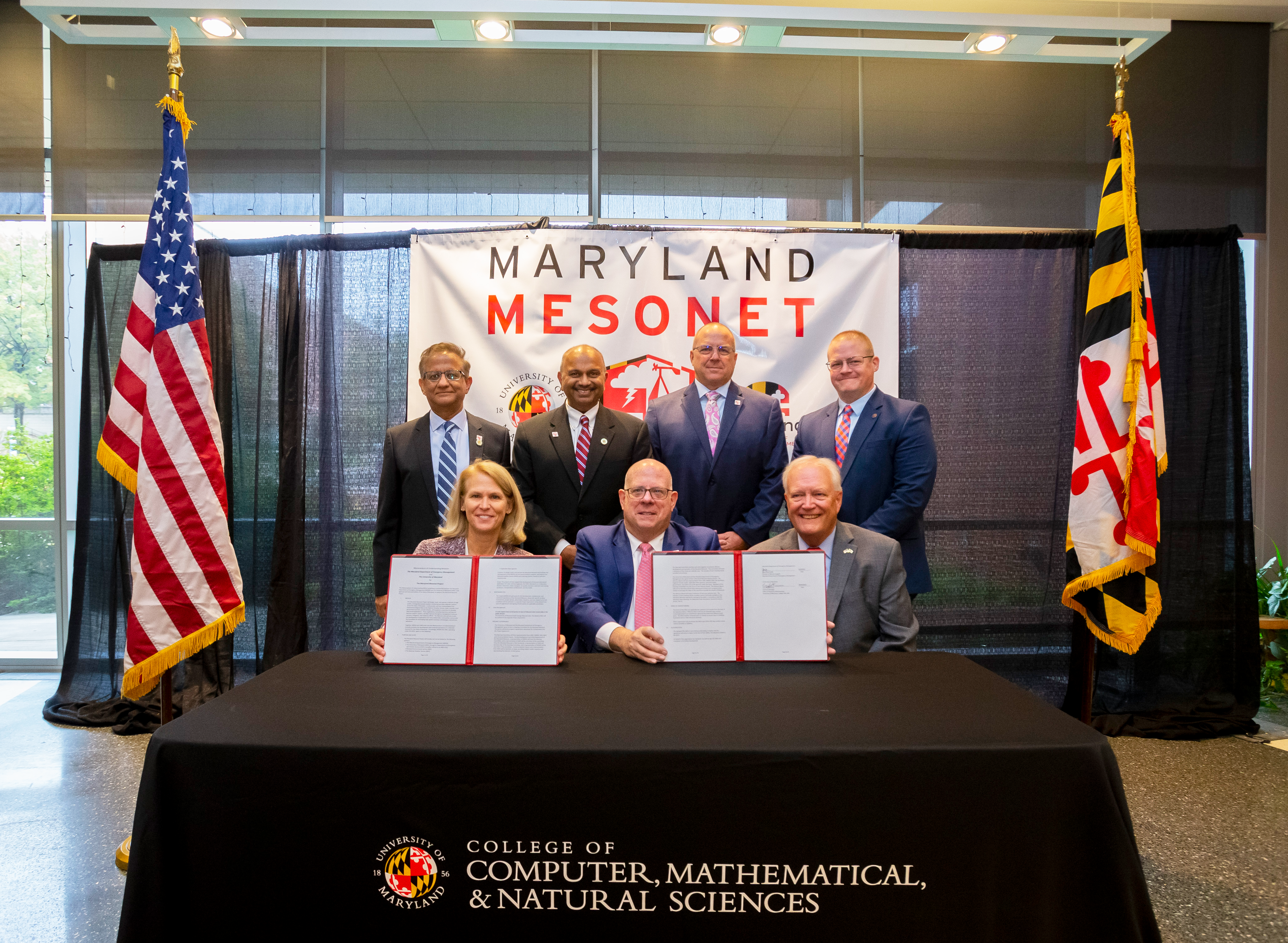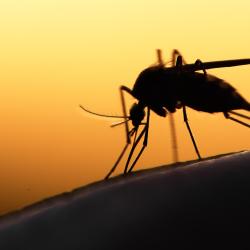State of Maryland and University of Maryland Partner to Build World-class Atmospheric System of Weather-observing Towers
Gov. Larry Hogan announces Maryland Mesonet project to enhance state’s critical infrastructure and preparedness
Maryland Gov. Larry Hogan today announced a groundbreaking partnership between the state of Maryland and the University of Maryland to build and operate the Maryland Mesonet, a state-of-the-art network of 75 weather-observing towers spanning the state that will provide real-time community-level monitoring and improve situational awareness during rapidly changing weather conditions.

“The Maryland Mesonet partnership we are announcing today, through a new memorandum of understanding between the state of Maryland and the University of Maryland, will build a world-class network of state-of-the-art environmental monitoring stations to provide real-time data 24 hours a day, 7 days a week, 365 days a year,” Hogan said in an event held at UMD’s Physical Sciences Complex. “I am pleased to announce that we have committed $4 million to this ambitious project, which will give our emergency managers even faster and more accurate data to make critical decisions about preparedness and deploying resources.”
The Maryland Mesonet will enhance public safety, reduce community risk, and aid in applications for disaster relief programs. It will also provide high-resolution meteorological observations to the National Oceanic and Atmospheric Administration (NOAA), helping improve the regional weather forecast and better protect residents and businesses.
“We are proud that the Maryland Mesonet expands the University of Maryland’s deep commitment to service for our state,” said UMD President Darryll J. Pines. “Weather has been increasingly challenging to predict, and our scientists will play a leading role in providing high-resolution atmospheric data to NOAA to improve regional weather forecasts. We will also work to inform local decision-makers who can better protect Marylanders and their businesses.”
The project will provide data to state and local agencies, the National Weather Service (NWS), Maryland school systems, farmers, fishermen, water managers, air-quality monitors, wind and solar energy producers, transportation professionals and the media.
“This partnership means that Maryland residents and visitors will receive better forecasts and earlier lead time for severe weather warnings, like severe thunderstorm, tornado, and flash flood,” said Maryland Department of Emergency Management Secretary Russ Strickland. “Through continued monitoring, threshold alerting, instant verification, and post-event analysis, the Maryland Mesonet will provide more data to our emergency management team to continually improve planning and processes, and will set a roadmap for a more weather-resilient Maryland.”
UMD’s Department of Atmospheric and Oceanic Science will leverage its faculty members' and graduate students’ knowledge and skills in monitoring, analysis and modeling to design, build, operate and maintain the Maryland Mesonet.
“Temperature, pressure, humidity, rainfall and snow data will be collected, as will soil moisture at various depths, to help develop warnings for extreme weather, including floods,” said Professor Sumant Nigam, the department’s chair and principal investigator of the Maryland Mesonet project. “In addition, we will monitor incoming solar radiation, wind speed and wind direction at high space-time resolution, collecting critical data for the state’s green energy industry.”
The Maryland Mesonet’s meteorological data will be collected every three seconds, with five-minute averaged data transmitted to a data center housed at UMD. After automated quality control, the mesonet data will be sent in near real-time to the NWS and the state and county emergency management offices.
“As our climate continues to warm, extreme weather events are expected to strike more frequently, and we need to be prepared,” said UMD Senior Vice President and Provost Jennifer King Rice. “That’s why the Maryland Mesonet is such an important project. Ultimately, the Maryland Mesonet will save lives.”
Since 1990, the state of Maryland has seen 24 weather-related Presidential Disaster Declarations, with an average cost of approximately $20 million per disaster. A limited supply of surface weather observations currently contributes to a delay in issuing essential weather warnings.
“I am confident that looking back, we will view today's launch of the Maryland Mesonet as a force multiplier in weather-related safety and emergency management in the state of Maryland,” said Amitabh Varshney, dean of UMD’s College of Computer, Mathematical, and Natural Sciences. “I can’t wait to see the Maryland Mesonet come to life.”
###
This article is adapted from text provided by the Office of Governor Larry Hogan.







